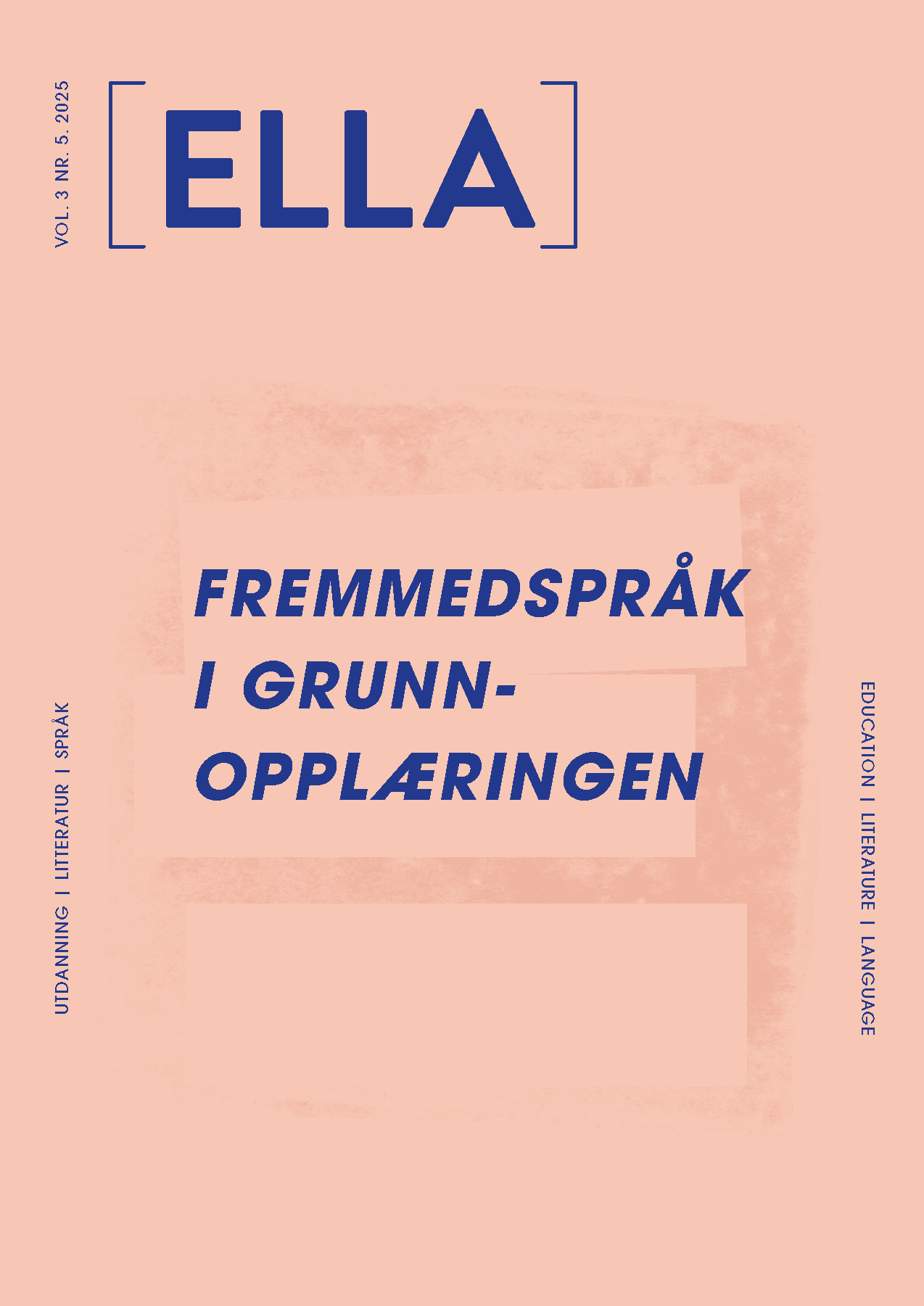To what extent do languages textbooks contribute to realizing a multilingual pedagogy?
An analysis of the digital German textbook, Spitze 8
DOI:
https://doi.org/10.58215/ella.108Keywords:
Spitze 8, multilingualism, multilingual pedagogy, textbook analysis, foreign languages, language learningAbstract
In this article, I undertake an analysis of Gyldendal’s (2022) digital textbook in German, Spitze 8, for the 8th grade. This has been created in accordance with the subject renewal in the Norwegian national curriculum Kunnskapsløftet in 2020 (LK20). I am investigating to what extent Spitze 8 contributes to the realization of a multilingual approach based on the guidelines in the subject curriculum for foreign languages. Being able to use one’s total language competence and to transfer language skills and language learning experiences from already learnt languages should be a meaningful resource when learning a foreign language at school. Despite educational policy documents and considerable research into the benefits of multilingualism in language learning contexts over the past 20 years, there is a lack of implementation of multilingual pedagogy in the field of practice. There may be different reasons for this, not least the lack of multilingual approaches in textbooks. Important factors for a multilingual approach are comparison of languages, learning strategies and positive attitudes in the language learning context. I undertake a qualitative content analysis where I use these categories as units of analysis. Spitze 8 has more multilingual elements than other textbooks, but through texts and exercises it stillmonolingual approach to language learning. There is still a way to go to implement a resource-oriented and holistic multilingual approach to language learning, where all language skills are equally valued.
Downloads
Published
Issue
Section
License
Copyright (c) 2025 Camilla Bjørke

This work is licensed under a Creative Commons Attribution 4.0 International License.

